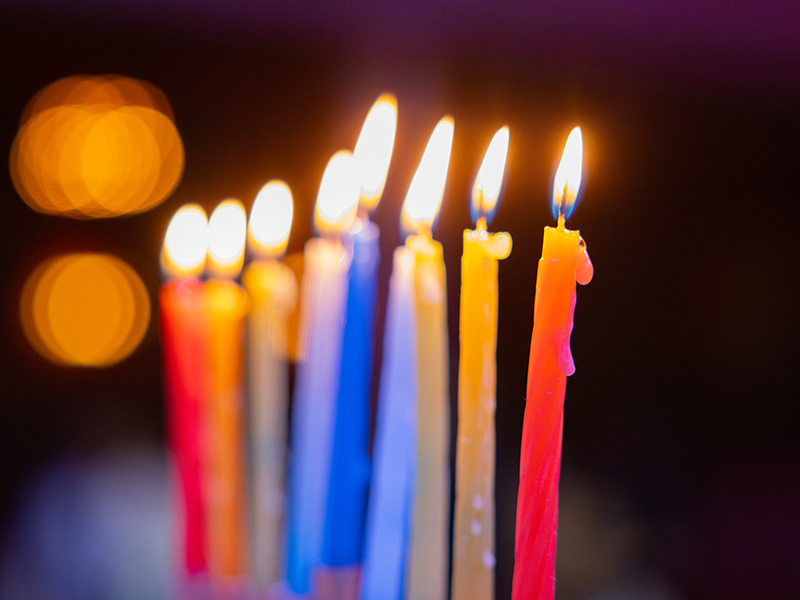refers to chocolate coins given to Jewish children on the festival of Hanukkah. They are usually wrapped in gold foil, and their history can be traced back to the decision of the Hasmoneans to mint their own nation’s coins after their military victory over the Greek Syrians. Gelt is often used to gamble with in the game of dreidel.
Hanukkah’s Money
The gelt of Hanukkah recalls the booty, including coins, that the victors distributed to the Jewish widows, soldiers, and orphans, possibly at the first celebration of the rededication of the Jerusalem Temple. Also, in ancient Israel, striking, minting, and distributing coins expressed Hanukkah’s message of political autonomy. The Maccabees' descendants, known as the Hasmoneans, ruled Judea and issued coins.
As the book of 1 Maccabees records, Syria’s King Antiochus VII said to Simon Maccabee, “I turn over to you the right to make your own stamp for coinage for your country” (15:6). Since 1958, Israel has minted commemorative Hanukkah medals, reforging this connection of coinage, freedom, and the holiday.
Money and Hanukkah go way back in other ways as well, including the very observance of the holiday. As early as the sixth century, the legal text known as the taught that the poor must celebrate Hanukkah even if they had to wander door to door to beg for the money to pay for the lighting materials, which in those days were probably oil, clay lamps, and wicks. Later, in Sephardi and Oriental (following the customs of Jews from North Africa and the Middle East) Jewish communities, people walked through their neighborhoods burning special grasses to ward off the evil eye in exchange for gifts or money at the Hanukkah season. Yemenite Jewish children were given coins to purchase sugar and red food dye to make a special Hanukkah wine.
With time, additional customs evolved related to giving coins at Hanukkah. Hanukkah came to be associated with the Hebrew word for education, chinukh. The gelt, or money for Hanukkah, supported Jewish learning. In the days of the Chasidic leader, the Ba’al Shem Tov (1698–1760), rabbis often traveled to distant villages to give instruction to impoverished and illiterate Jews, generally refusing payment. However, at Hanukkah, the instructors accepted coins and food as tokens of gratitude. Hanukkah gelt signified appreciative, though modest, compensation for dedicated Jewish educators.
All of that history and tradition resides in your chocolate gelt.
Ancient Israelite Coins
One of the early Israelite coins, produced during the rule of Antigonus Matityahu (40–37 BCE), the last in this line of Hasmonean kings, portrays a seven-branched menorah (candelabrum) on one side and the shewbread (offering) on the other, each symbol a reminder of the centrality of the ancient Jerusalem Temple to the Jewish people and the victory of the Maccabees over the Hellenists.
Make your own chocolate truffle gelt and learn about how fair trade chocolate embodies the message of Hanukkah.
This response is excerpted from On the Chocolate Trail: A Delicious Adventure Connecting Jews, Religions, History, Travel, Rituals and Recipes to the Magic of Cacao (Second Edition, Jewish Lights Publishing, 2017) by Rabbi Deborah Prinz. The book includes a chapter titled: “Hanukkah and Christmas Chocolate Melt into Gelt.”
Give to the URJ
The Union for Reform Judaism leads the largest and most diverse Jewish movement in North America.

